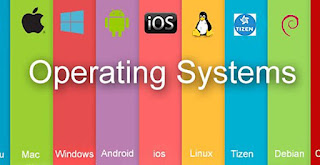Top 10 Operating Systems: A Comprehensive Review of Features, Use Cases, and Ratings
Introduction:
Operating systems serve as the foundation for our digital lives, powering our computers, smartphones, and other devices. With a plethora of options available, it can be challenging to choose the right one for your specific needs. In this blog post, we'll explore the top 10 operating systems, highlighting their unique use cases, advantages, and providing an overall rating out of 10. Let's dive in!
1. Windows 10:
Use Case: Windows 10 is a widely-used operating system suitable for general computing purposes, including gaming, productivity, and multimedia tasks.
Advantages: User-friendly interface, extensive software compatibility, strong gaming support, and regular updates.
Rating: 9/10
2. macOS:
Use Case: macOS is designed exclusively for Apple computers, offering seamless integration with other Apple devices.
Advantages: Sleek and intuitive interface, excellent performance, robust security, and optimized for creative professionals.
Rating: 9/10
3. Linux (Ubuntu):
Use Case: Linux, specifically Ubuntu, is a versatile operating system that caters to developers, programmers, and enthusiasts seeking customization and open-source software.
Advantages: Highly customizable, free and open-source, excellent security, vast software repository, and strong community support.
Rating: 8.5/10
4. Android:
Use Case: Android powers the majority of smartphones and tablets globally, offering a mobile computing platform for various tasks, including communication, gaming, and multimedia.
Advantages: Huge app ecosystem, seamless Google integration, customizable interface, and frequent updates.
Rating: 9/10
5. iOS:
Use Case: iOS is Apple's mobile operating system, exclusively for iPhones and iPads, known for its user-friendly interface and robust security.
Advantages: Smooth performance, extensive app selection, strong privacy features, and seamless device integration.
Rating: 9/10
6. Chrome OS:
Use Case: Chrome OS, developed by Google, is a lightweight operating system primarily focused on web browsing, productivity, and educational purposes.
Advantages: Fast boot times, simple interface, cloud-centric approach, automatic updates, and excellent for low-end hardware.
Rating: 8/10
7. FreeBSD:
Use Case: FreeBSD is an open-source UNIX-like operating system widely used in server environments, networking, and embedded systems.
Advantages: Highly stable, reliable, secure, and excellent for networking and server-related tasks.
Rating: 8/10
8. Windows Server:
Use Case: Windows Server is a robust operating system designed for server environments, providing scalability, stability, and enterprise-level features.
Advantages: Powerful server management tools, Active Directory integration, excellent support for Microsoft technologies, and extensive hardware compatibility.
Rating: 8.5/10
9. CentOS:
Use Case: CentOS is a free and community-supported operating system derived from the commercial Red Hat Enterprise Linux, ideal for server deployment and enterprise environments.
Advantages: Stable, secure, and reliable, with long-term support, enterprise-grade features, and compatibility with Red Hat ecosystem.
Rating: 8/10
10. Unix:
Use Case: Unix, the progenitor of many modern operating systems, is predominantly used in large-scale enterprise environments and critical applications.
Advantages: High performance, robust security, excellent multi-user support, and extensive command-line capabilities.
Rating: 8.5/10
Conclusion:
Selecting the right operating system depends on your specific needs and preferences. Windows 10 and macOS stand out as versatile and user-friendly options for general computing, while Linux and FreeBSD offer customization and open-source flexibility. For mobile devices, Android and iOS excel, each with its own ecosystem and strengths. Chrome OS serves well in
low-end hardware scenarios, while Windows Server and CentOS dominate the server landscape. Unix remains a powerhouse in enterprise environments.
Remember, these ratings are subjective and based on the general consensus of features and user experiences. It's essential to assess your requirements and research further to determine the best fit for your individual needs.



Comments
Post a Comment